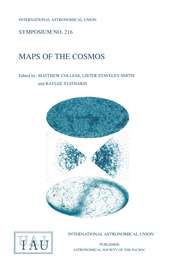No CrossRef data available.
Article contents
Structure of the Gaseous Disk in RX Cas
Published online by Cambridge University Press: 14 August 2015
Extract
RX Cas appers to be a long-period Algol-like binary with very fast mass exchange (Struve 1944). In the period 1975-1977, this star was observed photometrically by Arsenijevič, Grygar, Harmanec, Horn, Koubský, Kříž and Pavlovski at Hvar Observatory (Yugoslavia) and by Zverko at Skalnaté Pleso Observatory (Czechoslovakia). The resulting UBV light curves seem to be rather peculiar, for the following reasons:
1) Combining our observations with the older ones, we obtain the following formula for the times of minima:

The period increase is surprisingly high.
2) The scatter of observed points is considerable (about 0.2 mag.) and cannot be caused by observational errors. It corresponds to short period light variations on the time scale of several days.
3) After J.D. 24422660, the brightness of the whole system decreased in all colours. This decrease is about 0.2 mag. in V colour and 0.5 mag. in U colour. Only after J.D. 2442900 the brightness increased again. Such a behaviour confirms the reality of old observations by Gaposchkin (1944) and Martynov (1950) who found a long-term light variation with a period of approximately 500 days.
4) The part of the light curve around the phase 0.75 is definitely much lower than the corresponding part around the phase 0.25. This effect is most pronounced in the ultraviolet; the depression around the phase 0.75 is much deeper than the secondary minimum. This behaviour is opposite to the behaviour of dwarf novae. Instead of a bright shoulder connected with a bright spot, we observe some darkening.
- Type
- V. Algol and Algols
- Information
- Copyright
- Copyright © Reidel 1980


